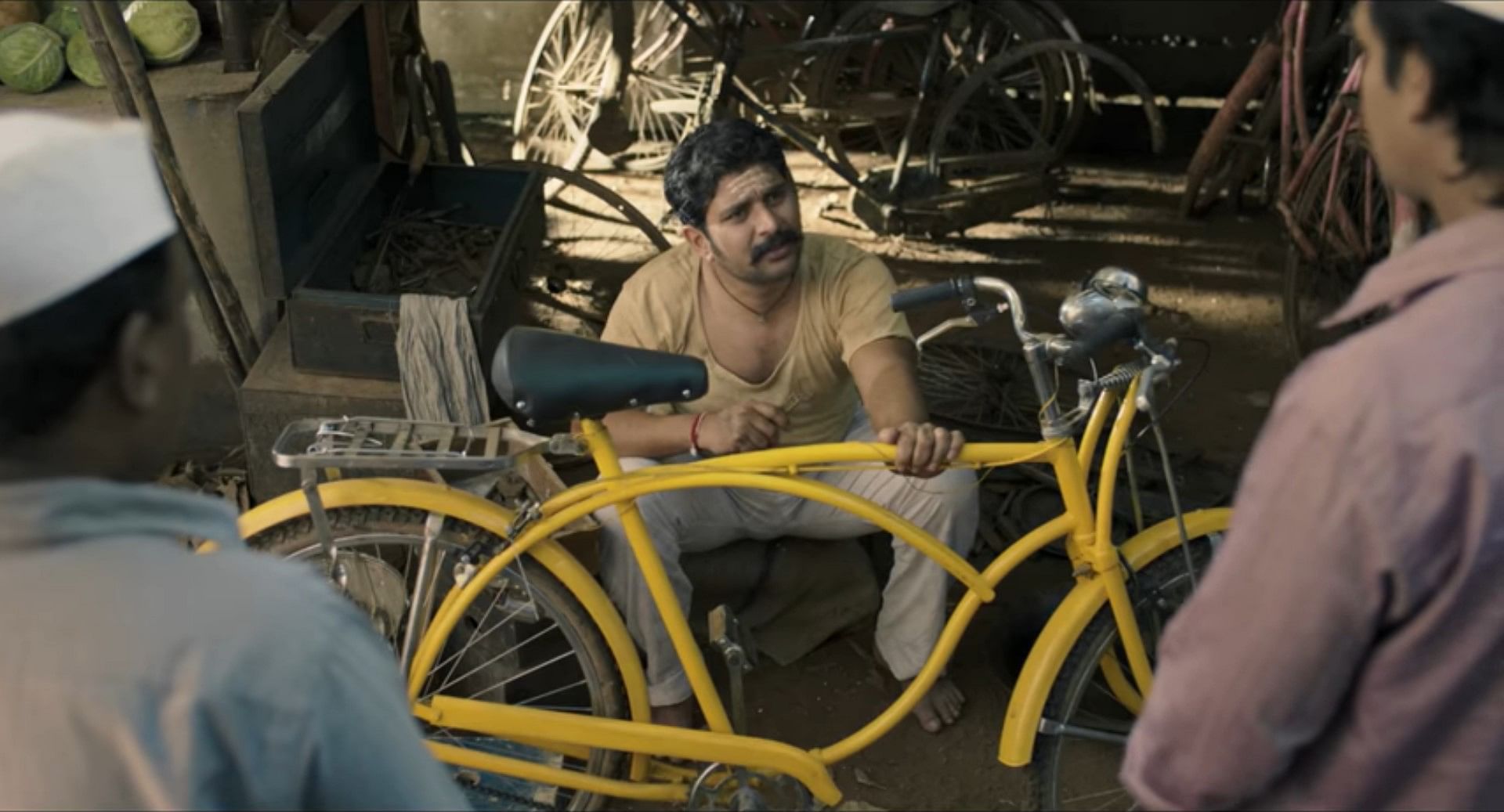
Cycle, a 2018 Marathi film, streaming currently on Netflix, is evidently an old-world movie with slices of life-lessons and good-natured comedy. But its handling of caste is what is truly remarkable.
Simply put, the movie does not make caste invisible. The protagonist, Keshav is quite clearly a brahmin astrologer who prides in his cycle, gifted to his grandfather by a British officer for curing his colic through indigenous medicine. The film, set in 1958, revolves around two things, one how Keshav reacts with extreme sadness when his bicycle is stolen, ignoring his own advice to others that attachment to material objects is futile and two, the bicycle thieves’ transformation into sensitive individuals.
A typical characteristic of this brahmin is established as compassion when he refuses dakshina or fees from a distressed man. In another scene, when a client asks for his bicycle, Keshav struggles to refuse; he is too naïve to see through the prank. Then, the thieves who steal the bicycle declare themselves Keshav’s distant cousins and since the cycle is recognized in all the nearby villages they pass through, they receive warm hospitality, tea, snacks, meals, laddoos, stayover invitations and more. Through the thieves’ sojourn, we see that the brahmin was essentially a soothsayer, a sympathetic listener of others’ misfortunes and mingled with everyone irrespective of caste and class. In fact, Keshav treats everyone as a friend—old and young alike. In numerous puranas and dharmashastras, this is indeed the definition of a brahmin.
We simultaneously hear the story of the thieves; they mourn their inability to go to school and viewers can empathize with them. But Cycle mostly does not deconstruct the problem of thievery as emerging from inadequate resources as would modern discourses such as Marxism. Instead, the movie treats it as a problem of inadequate education—not the kind one gets in a school, but deeper still—the preservation of conscience or antahkarana, the inner sense organ. As the thieves travel on the stolen bicycle, they are moved by the goodness spread by their victim, their conscience is stirred, and they develop unexpected feelings—of sadness and elation. They find new selfhoods and are reformed. The understanding of thievery as not a problem of resources but of compulsion and a silencing of conscience in India was likely because large scale poverty did not exist until colonization.
Cycle’s defense of the thieves’ own circumstances is reminiscent of Yudhisthira’s questions to Bhishma and other elders in the Mahabharata. “How do I care for the bandits?” he asks. Recommending their inclusion, they tell Yudhisthira that a bandit must never be punished with death because it deprives his family of livelihood, that a bandit’s progeny must never be assumed to be evil by nature and that there are good bandits too. In the Mahabharata, the thief and bandit are critiqued but can survive; they form the oldest profession and are so normalized that modern sensibilities would be shocked. There is no moralizing or preachy tone admonishing the thieves, instead, everybody learns a lesson. The thief does not want to be a thief anymore; the brahmin is reminded that he is attached to worldly objects.
Cycle’s portrayal of the brahmin is in sharp contrast to the equally authentic portrayal of the greedy brahmin consorting with a mistress in Tumbbad. Upon release, Tumbbad received several negative comments for its negative portrayal of brahmins. But numerous Hindu texts insist repeatedly that the true brahmin is the one who refrains from greed, lust, and other vices. The false brahmin is the one who possesses mistresses and wealth, while caste is based on conduct. Cycle shows everyone what a true brahmin looks like.
Keshav refuses to take the cycle when he finally finds it, the thieves’ letter satisfies him. Cycle admonishes all castes equally for their excesses and is understanding of the circumstances of each.
Dr. Sushumna Kannan is the author of Hinduism and Violence, forthcoming, 2021